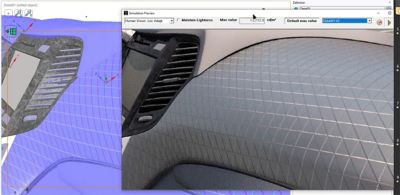-
-
Access Free Student Software
Ansys empowers the next generation of engineers
Students get free access to world-class simulation software.
-
Connect with Ansys Now!
Design your future
Connect with Ansys to explore how simulation can power your next breakthrough.
Countries & Regions
Free Trials
Products & Services
Learn
About
Back
Products & Services
Back
Learn
Ansys empowers the next generation of engineers
Students get free access to world-class simulation software.
Back
About
Design your future
Connect with Ansys to explore how simulation can power your next breakthrough.
Free Trials
ANSYS BLOG
February 7, 2023
Latest Ansys Speos Release Improves Optical Simulation Accuracy and Speed Across the Spectrum
Efficient and accurate modeling of light and its interaction with different materials and structures is a big challenge in optical engineering involving complex multiscale and multiphysics systems. Ultimately, the use of simulation leads to an understanding of how these optical and optically enabled product designs and systems function, which in turn informs how they can be improved in the future.
Looking through the lens of Ansys Speos optical system design software enables you to see and explore the propagation of light in three dimensions. This, as well as Speos’ interactive design capabilities, leads to correct first-time simulation results for optical surfaces, light guides, and optical lenses, enhanced by powerful light analysis and illumination evaluation capabilities across the electromagnetic spectrum.

What’s New for 2023
Of course, innovation continues to boom in optical applications for a wide variety of markets, from automotive illumination and augmented or virtual reality (AR/VR) to medical equipment and consumer electronics. With these industries and trends in mind, Speos continues to deliver familiar, accurate, and high-performance simulation capabilities for optics designers — along with several new ones — to help speed up your time to results, improve simulation accuracy, and expand interoperability with other Ansys products.
With the 2023 R1 release of Ansys Speos, we're proud to announce the latest improvements:
- The Texture Mapping Preview tool elevates the use of multilayered materials in your optical design. You can stack and blend multiple textured optical properties such as brushed metal, composite, serigraph, and grating, and easily analyze the results. You can also edit texture definitions and immediately visualize the changes, displayed on angle sum property (ASP) geometry with fidelity of size and orientation.
- The Virtual Lighting Animation tool — currently in beta — enables enhanced post-processing simulation. You can use it to define power ratio timelines of each power source and use the timelines to produce animated videos — such as videos that highlight the temporal variation of power in animated turn indicators or other animated automotive lighting.
- The Optical Surface/Optical Lens tool defined by Excel simplifies control over many facets of your optical design by using a single Microsoft Excel spreadsheet to specify and calculate all parameters. You can use formulas in Excel to smoothly vary parameters along surfaces and save time using a single spreadsheet template as a basis for multiple designs.
- The Speos GPU Acceleration tool is now out of beta and ready for prime time to improve processing times for ray tracing by up to 60 times per chip by using powerful graphics processing unit (GPU) compute capabilities built right into your desktop; no high-performance computing (HPC) or cloud required. It also improves simulation times by up to 120 times without the need for complex hardware setups. Now that the 2023 R1 Speos GPU Solver is fully supported, we've added even more exciting new features over the beta version, including support for human eye sensors on GPU, retro-reflective bi-directional scattering distribution function (BSDF), and multisensor direct simulation.
- Ansys Cloud integration helps you work more efficiently in the cloud with our most recent integration improvements. You can easily adjust the number of cores available for Speos simulation using flexible queues, then download results automatically when Ansys Cloud Direct simulation is complete. You can also conduct simulations faster than ever before — up to 400 times faster than a 16-core workstation — using the 960 available cores in our new HBv3 clusters.
- Ansys Workbench Launcher integrates more seamlessly with Ansys Workbench using a new shortcut for launching Workbench from within Speos. It also enables simplified design of experiment (DOE) techniques for advanced design optimization by driving parameters of scripts to create Speos features.
Delivering New Perceptions in Optics
Ultimately, illuminating insights in Speos can shed light on big design discoveries — whether you’re optimizing optical designs for AR/VR or mixed reality (MR) applications in glasses, headsets, and smartphones, or running head-up display (HUD) feasibility studies according to windshield shape and package constraints. With Speos, the power of illumination and optical system performance prediction is yours to improve efficiency while saving on prototyping time and costs.
Get the latest Speos version and optimize the ways you bring system-level design and validation to the optical systems you invent. To learn more, attend our What's New in Ansys Speos 2023 R1 webinar or contact Ansys to find out more.